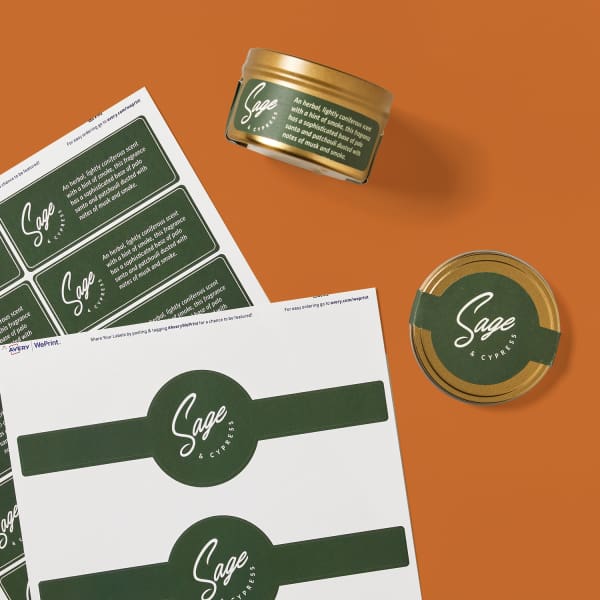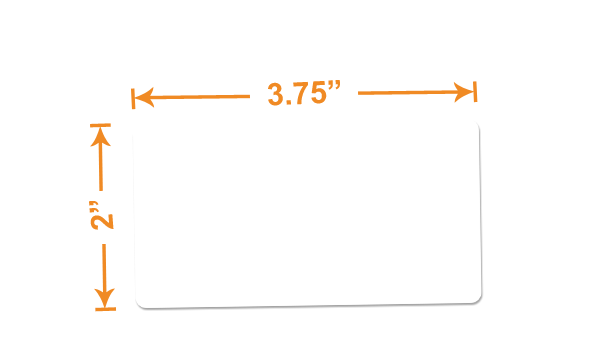Understanding How Blank Labels Work to Enhance Your Labeling Experience
Comprehending the mechanics of blank labels is essential for enhancing your labeling methods throughout numerous contexts. To completely grasp exactly how these labels can transform your processes, one need to take into consideration the various kinds readily available and the myriad methods they can be tailored to match details demands.

Benefits of Utilizing Blank Labels
Blank labels offer a flexible solution for various identifying demands, making them very useful in both individual and professional setups. Their adaptability allows users to create customized labels tailored to particular needs, enhancing organizational efficiency. Whether used in home offices, retail environments, or industrial applications, blank labels promote the identification and classification of items, documents, and personal products.
One substantial benefit of blank labels is their cost-effectiveness. By allowing users to print only the labels they require, waste is reduced, and supply monitoring becomes extra manageable. Furthermore, blank labels are suitable with different printing techniques, including inkjet and laser printers, making them accessible for various users.

Additionally, the usage of blank labels simplifies the process of updating information, as users can quickly publish brand-new labels to replace out-of-date ones, ensuring that all items and documents are properly labeled. Overall, blank labels supply a useful and efficient labeling option for diverse applications.
Kinds Of Blank Labels Available
What choices are available when it comes to blank labels? Blank labels come in a range of types, each suited for different applications and preferences.
Another popular option is synthetic labels, commonly made from materials like polyester or vinyl. These labels are understood for their sturdiness and resistance to water, chemicals, and tearing, making them suitable for rough settings. They are generally utilized in commercial settings or for labeling items that may be revealed to wetness.
In addition, there are thermal transfer labels, which need a printer that uses heat to move ink onto the label surface area. These labels are preferred for their high-quality print and longevity.
Finally, specialty labels satisfy details demands, such as removable labels for momentary use or high-temperature labels for extreme conditions. Comprehending these choices enables users to pick the most suitable blank tag for their special labeling requirements.
Personalization Options for Labels
A large variety of modification options is readily available for labels, enabling customers to tailor them to specific needs and branding requirements. Customers can pick from numerous dimensions, shapes, and materials to ensure that the labels effectively fit their desired purpose. Common products include paper, polyester, and vinyl, each providing various degrees of durability and aesthetic charm.
Color options play an important duty in personalization, making it possible for brands to maintain uniformity with their business identity. Individuals can pick from a spectrum of shades or perhaps go with custom printing to match particular branding components. In addition, labels can be printed with special styles, logos, and message, boosting brand recognition and visual impact.
An additional essential facet is the selection of adhesive. Labels can be made with long-term, removable, or repositionable adhesives, depending on the application needs. This versatility permits effective labeling options across numerous environments, from retail to commercial setups.

Tips for Effective Labeling
Reliable labeling goes beyond customization; it also includes critical considerations that enhance functionality and communication. To accomplish efficient labeling, start by clearly defining the objective of each tag.
Next, focus on presence by selecting ideal colors and fonts. High comparison in between message and background enhances readability, while larger typefaces help with quick identification. Furthermore, make sure that labels are positioned in a regular and logical way, making it easier for users to find and analyze details.
Think about the resilience of labels. Pick products matched for the details environment where the labels will certainly be utilized, whether it be indoors or outdoors. Waterproof or tear-resistant alternatives might be required depending on the context.
Lastly, regularly review and upgrade your labels to show any changes in info or use. This proactive method see not just keeps clarity but likewise avoids complication in time. By complying with these pointers, you can take full advantage web link of the performance of your labeling initiatives, ensuring they serve their intended function efficiently.
Applications of Blank Labels
Blank labels use various applications across different markets, making them a very useful device for organization and communication. These versatile labels are commonly made use of in stockrooms for supply management, allowing services to easily identify and track products. By applying blank labels to storage space containers, shelves, or pallets, companies can simplify their procedures and reduce the probability of errors.
In the healthcare market, blank labels play a crucial role in identifying medications and clinical supplies, making certain appropriate recognition and use. Personalized labels can consist of essential info such as dose, expiration days, and client details, improving safety and security and compliance.
In retail, blank labels assist in rates items, offering promotions, or labeling shelf areas, which inevitably boosts the customer experience. They enable fast updates to rates or product information without the need for pre-printed labels.
Furthermore, blank labels are valuable for personal use, such as organizing home offices, crafting, or classifying food containers. Their versatility permits people to produce tailored services that satisfy details needs. In general, the applications of blank labels are substantial, underscoring their relevance in cultivating performance and clearness in numerous settings.
Verdict
In conclusion, blank labels provide a flexible and reliable option for numerous identifying needs. Their versatility in dimension, form, and material enables customized applications throughout various environments. By leveraging modification alternatives and effective labeling methods, visit this site right here companies can boost clarity and communication (Blank Labels). Eventually, the assimilation of blank labels into operational procedures contributes to improved effectiveness, making them an important resource for both personal and expert use.